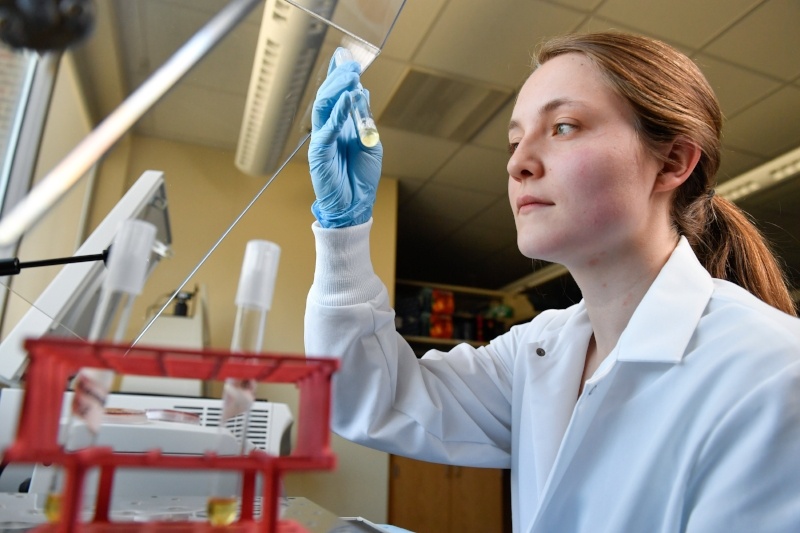
What if one of the prime suspects behind Alzheimer’s disease was a case of mistaken identity?
Amyloid plaques, sticky buildup that accumulates in and around neurons in the brain, have long been believed to be an indicator of neurodegenerative disease. Most clinical drug trials for Alzheimer’s disease treatment have failed, presumably because they target these plaques.
But according to Raymond Anderson, a graduate student in West Virginia University’s School of Medicine, such buildup alone does not correlate with disease severity. In fact, these buildups may even protect neurons.
Raymond Anderson received $132k from NIH to augment his research capabilities.
The National Institutes of Health awarded Raymond Anderson $132,000 over three years to explore a different culprit: a specific form of a protein—called tau—that can sabotage neurons’ ability to break down and clear out damaged proteins.
Tau in itself is not harmful. In fact, it lends stability to the axons that make up nerves.
Anderson likened tau to the cables on the Golden Gate Bridge. He explained that if a segment of tau becomes knotted or misfolded and breaks free of the “bridge” it can “float around the cell and wreak havoc.”
He will study how a free-floating and misfolded form of tau impairs a cell’s ability to scrap old proteins, which is important to keep neurons healthy. He will also determine if reviving the cells’ protein-degradation process can protect neurons from tau’s neurotoxic effects.
“For the longest time, researchers thought it was these neurofibrillary buildups—or tangles—of tau that were the toxic forms, but there’s actually an argument that they could be neuroprotective by sticking to free floating toxic tau, sequestering it into the neurofibrillary tangle,” Anderson said.
The notion that the free-floating, misfolded form of tau is toxic and entangled tau is protective still generates controversy among researchers, but it might be coming into wider acceptance.
What does Anderson's research mean for our current understanding of Alzheimer's?
If Anderson can pinpoint the way tau inhibits the protein-degrading process, the discovery can lead to medications that keep tau from interfering with healthy protein degradation or help cells compensate for it.
“While we expect that this toxic form of tau that Mr. Anderson is studying contributes to neuronal dysfunction in Alzheimer’s disease, it also appears that this may be just the tip of the iceberg, since we have also found other misfiled proteins from Parkinson’s disease and Huntington’s disease with similar mechanisms of action,” said David Smith, who serves as Anderson’s research adviser, is an associate professor of biochemistry and is a faculty member in the WVU Rockefeller Neuroscience Institute.
“There are many ways that tau can possibly be inhibiting protein degradation,” Anderson said. “I like this research because it gives me the opportunity to tease out the precise molecular mechanisms of tau’s toxicity to the giant molecular machines responsible for protein degradation.”
Here at West Virginia University, we're dedicated to promoting research that really matters.
West Virginia University is one of 115 universities classified as having R1 status, which means we’re recognized for our groundbreaking research and innovation. Only the best research universities in the country achieve this status, and WVU is renowned for its research-based graduate programs and popular research-intensive programs.
If you're interested in joining the WVU community, we hope you'll request more information today!
Also, if you have questions about the below topics, we have resources to help you there too!
- Securing a graduate assistantship
- Choosing a graduate school
- Financing graduate school
- GRE test prep
- Making a career change
- Enrolling in graduate school online
- Choosing a STEM education
Note: This article was originally published on January 30, 2018 here. Research reported in this publication was supported by the National Institute on Aging of the National Institutes of Health under Award Number F31AG058473. The content is solely the responsibility of the authors and does not necessarily represent the official views of the National Institutes of Health.
Check out our digital resource — A Guide to Graduate Programs and Careers in STEM— and let us help you as you navigate the process of changing career fields!


-489630-edited.jpg)





